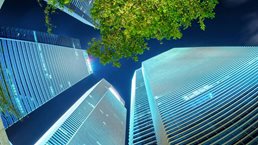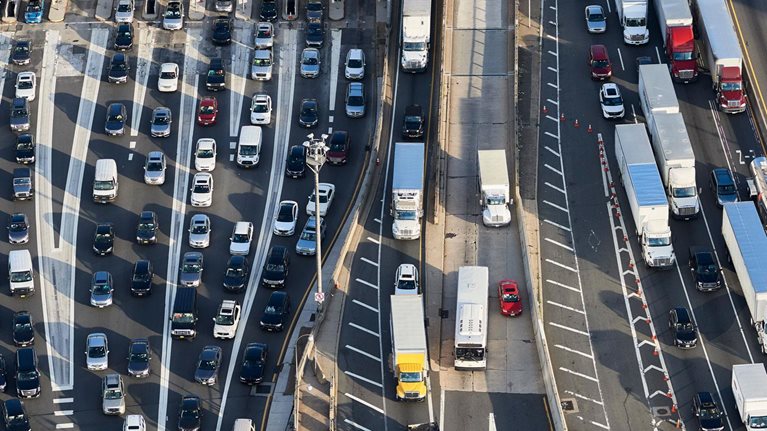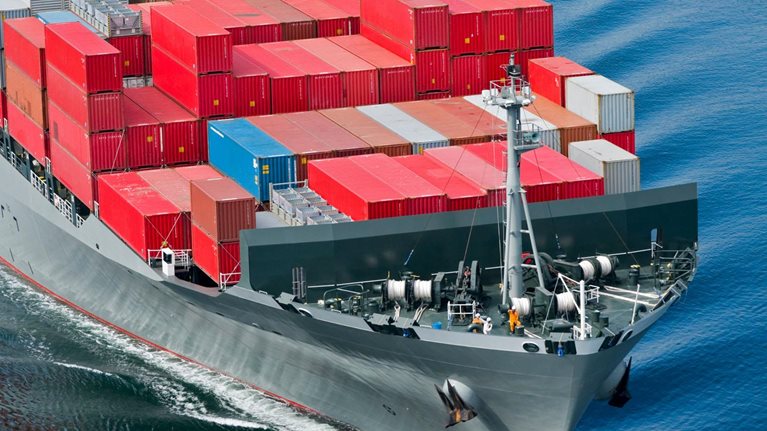Cities are becoming the switchboards of the globalized economy, and for many people it’s exciting to live in them—except for traffic congestion and its emissions. Banning cars is now a frequently considered response, but this option doesn’t actually support the development of cities. In fact, there’s a much better solution: a transportation system that ensures that all its elements—cars, trains, trams, buses—run as efficiently as possible. Let’s start to think systemically, not piece by piece.
Stay current on your favorite topics
It’s Monday morning, 8 a.m. A busy week is starting for millions of workers. But many of them can expect some downtime as soon as they leave home: the daily traffic jam. The number of hours we all spend in traffic jams continues to grow objectively and to annoy us subjectively. London faces acknowledged congestion issues; apparently its citizens are stuck in their cars for an additional 73 hours per year due to congestion.1 But we all know it’s not just London: being stuck in traffic happens to everyone, especially those of us who live in those cities that are growing and thriving the most.
In fact, the problem may get worse. The number of people living on this planet continues to grow; and precisely because of the opportunities cities offer, an ever-increasing number of them will move to urban agglomerations. A case in point: there were 28 megacities in 2014, and this number is expected to grow to 41 by 2030.2 Traffic density and the demands on road infrastructure will increase accordingly, especially in fast-developing nations. China’s fleet of vehicles, for example, has grown by a factor of five over the past decade, from more than 30 million in 2005 to more than 160 million in 2015.3 And one forecast estimates that in 2017 alone, total vehicle sales in the ten Association of Southeast Asian Nations (ASEAN) countries will grow 8.1 percent.4 In a joint study with Credo, Siemens estimated the loss of gross domestic product (GDP) in cities worldwide due to their citizens’ unproductive commuting hours; the estimate ranges from 8 percent of GDP to nearly 30 percent!5
As a result, urban authorities are under pressure to prevent even more congestion. And that pressure is intensifying. In Germany, for instance, some cities find themselves forced to consider a ban of all but the most recent models of diesel-powered cars. At the same time, in Germany and everywhere else around the world, electric and driverless vehicles are being discussed.
Would you like to learn more about our Capital Projects & Infrastructure Practice?
But let’s be honest: banning cars, especially in developed countries, is unrealistic. Studies have shown that if it’s an option, people prefer to travel using their own car.6 Alternative means of transportation, including biking and public transit, should be part of the transportation future of all countries—but they won’t be a total solution to the problem. For example, public transport isn’t a viable alternative for many commuters because they don’t take them the “last mile”: the last stretch between the public transportation stop and home.
A better solution
We need a better solution—and luckily, there is one. It’s disruptive because it requires us to shift our perspective a bit: let’s stop looking just at cars and how we can reduce their numbers, and let’s look instead at the entire system, of which cars are just one part. What if there was a smart infrastructure that connected road, rail, and other modes of transportation in such a way that all of them worked together to serve the mobility needs of the modern urban population?
Let me explain in more detail what I mean by this.
All vehicles—cars, buses, trains, freight vehicles, and so forth—will communicate with the infrastructure, including roads, tracks, and traffic lights, using sensors. Vehicle-to-infrastructure communication will make the city function like a giant computer, with a central operating system that everything flows into. The information obtained in this way, after being compiled and analyzed by a central platform, will help us maintain the flow of and direct traffic intelligently, reduce congestion, and adapt the infrastructure to meet acute requirements. Smart traffic management systems have at least three major benefits. They make public transportation more reliable thanks to traffic prediction; they make it safer because assistance systems back up human reactions; and they make it more flexible because pulsing—for example, in subways—can be shortened during peak hours. They also facilitate intermodal travel, using different means of transportation in combination, which will help cover the “last mile” mentioned above. Only this digital interconnectivity can make the electrification and automation of transportation a practical option and the disruption of transportation a realistic feature of the urban future.
To some, this description may sound too futuristic. In fact, it’s not. Technologies that point the way toward this shift of perspective are already up and running. One example: open, cloud-based Internet of Things operating systems exist today, and they allow infrastructure operators to easily connect their assets and perform data analyses without having to develop or invest in the requisite IT infrastructure. Singapore, for example, will be piloting MindSphere from Siemens to become a fully integrated urban ecosystem with a modernized infrastructure, optimized energy management, and transformed industries.

Voices on Infrastructure
Our quarterly compendium on infrastructure and capital projects
A related solution has made it possible for high-speed trains to run between Madrid and Barcelona with 99.98 percent reliability. It’s called predictive maintenance, and it relies on algorithms that analyze the data submitted by the trains. The algorithm detects an anomaly, and a potential malfunction can be detected and prevented before it even occurs. That the trains between Madrid and Barcelona are now so reliable isn’t just convenient for travelers, it also means that this rail link can now compete with air transport: more than 60 percent of passengers now choose to take the train.7
Yet another tool is the City Performance Tool Air, which also runs on the Siemens operating system for cities. It uses proprietary data on more than 70 transportation, building, and energy technologies to deliver detailed insights into potential CO2 and air-quality improvements. It also identifies new local jobs that each technology could create if the users were to implement the suggested measures.
The commute of the future
Instead of sitting in traffic for an hour before starting the workday, the commuter of the future may get in her car on Monday, check the potential routes, and drive in a smooth traffic flow to a nearby train station, where she walks onto a train that departs just one minute later, getting her to work in half the time. In fact, the driving may even be autonomous, guided by a smart infrastructure that tells the car where it can find the fastest and safest route. Another day, she may drive the whole way in the same amount of time, guided on a new route by smart traffic lights. Fewer hours stuck in traffic jams and at public transportation stops means less stress, and relaxed people are more productive. Fewer hours alone in the car or in overcrowded buses and trams also means less CO2 emissions and more time with family and friends.
Governments stand to reap significant financial rewards when they find solutions to intractable transportation problems. McKinsey estimates that cities alone could stand to gain up to $1.7 trillion per year in 2025 from applications in the area of transportation, public health and safety, resource management, and service delivery.8 Ultimately, the goal is to ensure that navigating our streets and rail systems is convenient and safe—and that our cities remain exciting places to live.
Photo courtesy of Siemens


